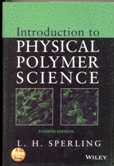
|
MICROWAVE ENHANCED POLYMER CHEMISTRY AND TECHNOLOGY, INDIAN REPRINT - DARIUSZ BOGDAT (EX) |
Author |
DARIUSZ BOGDAT
ALEKSANDERPP PROCIAK
|
|
Cover Price : Rs 4,995.00
|
Imprint : Wiley
ISBN : 9788126542383
YOP : 2013
|
Binding : Hardbound
Total Pages : 286
CD : No
|
|
The emergence of microwave-enhanced chemistry as an environmentally friendly method of synthesis has been significant in recent years. Features of microwave irradiation,such as, solvent-free reactions, low waste, energy efficiency, high yield, short reaction time, and possible use of alternative solvents, can play an important role in the development of green chemistry methods.
While polymer technology forms one of the largest areas of application of microwave technology, and the methods and procedures used therein are among the most developed, there is still a relative lack of published information on the subject.
Microwave-Enhanced Polymer Chemistry and Technology describes novel approaches to polymer processing using microwave technologies. Coverage includes background and scientific data, analysis of processes and product properties in comparison with existing technology, applications that are being used in various approaches, and the status of current research.
Contents
Preface.
1.Fundamentals of Microwaves
2.Overview of Polymerization Processes Under Microwave Conditions in Comparison with Conventional Conditions
3.Thermoplastic Polymers
4.Thermosetting Resins
5.Polymer Composites and Blends
6.Renewable Resources for the Preparation of Polymeric Materials and Polymer Modification
7.Recycling of Plastics
8.Commercialization and Scaling-Up
Index
About the Authors
Dariusz Bogdal,Ph.D is Professor at the Institute of Polymer Science and Technology at Cracow University of Technology in Kracow, Poland.Dr. Bogdal has over 20 years of research experience in organic and polymer chemistry. He has worked extensively on the application of phase-transfer catalysis (PTC) and microwave irradiation to organic and polymer synthesis as well as polymer modification. His work has included the application of phase-transfer catalytic reactions to polymer chemistry. Dr. Bogdal is on the management committees of two international COST programs within the frame of the European Science Foundation, Sustainable/Green Chemistry and Chemical Technology and Chemistry in High Energy Microenvironments.
Aleksander Prociak, Ph.D. is Assistant Professor at the Institute of Polymer Science and Technology at Cracow University of Technology in Kracow, Poland.Dr Prociak has 18 years of research experience in polymer technology, specifically with various polyurethanes (ride and flexible foams, elastomers, coatings and adhesivs) His work has included applying environmentally friendly components to polyurethane systems.
|
|
 |

|
INTRODUCTION TO PHYSICAL POLYMER SCIENCE 4TH ED., INDIAN REPRINT - L.H. SPERLING (EX) |
|
|
Cover Price : Rs 3,495.00
|
Imprint : Wiley
ISBN : 9788126542369
YOP : 2013
|
Binding : Hardbound
Total Pages : 876
CD : No
|
|
Polymers constitute the basis for the plastics, rubber, adhesives, fiber, and coating industries. The Fourth Edition of Introduction to Physical Polymer Science acknowledges the industrial success of polymers and the advancements made in the field while continuing to deliver the comprehensive introduction to polymer science that made its predecessors classic texts.
The Fourth Edition continues its coverage of amorphous and crystalline materials, glass transitions, rubber elasticity, and mechanical behavior, and offers updated discussions of polymer blends, composites, and interfaces, as well as such basics as molecular weight determination. Thus, interrelationships among molecular structure, morphology, and mechanical behavior of polymers continue to provide much of the value of the book.
Newly introduced topics include:
* Nanocomposites, including carbon nanotubes and exfoliated montmorillonite clays
* The structure, motions, and functions of DNA and proteins, as well as the interfaces of polymeric biomaterials with living organisms
* The glass transition behavior of nano-thin plastic films
In addition, new sections have been included on fire retardancy, friction and wear, optical tweezers, and more.
Introduction to Physical Polymer Science, Fourth Edition provides both an essential introduction to the field as well as an entry point to the latest research and developments in polymer science and engineering, making it an indispensable text for chemistry, chemical engineering, materials science and engineering, and polymer science and engineering students and professionals.
Trained as a chemist, L.H.SPERLING is Professor Emeritus of both Chemical Engineering and Materials Science and Engineering at Lehigh University in Bethlehem. Pennsylvania. He remains active in consulting, speaking, and writing.
Contents
Preface to the Fourth Edition.
Preface to the First Edition.
Symbols and Definitions.
1. Introduction to Polymer Science.
2. Chain Structure and Configuration.
3. Dilute Solution Thermodynamics, Molecular Weights, and Sizes.
4. Concentrated Solutions, Phase Separation Behavior, and Diffusion.
5. The Amorphous State.
6. The Crystalline State.
7. Polymers in the Liquid Crystalline State.
8. Glass-Rubber Transition Behavior.
9. Cross-linked Polymers and Rubber Elasticity.
10.Polymer Viscoelasticity and Rheology.
11.Mechanical Behavior of Polymers.
12.Polymer Surfaces and Interfaces.
13.Multicomponent Polymeric Materials.
14.Modern Polymer Topics.
References.
General Reading.
Study Problems.
Index.
|
|
 |
|